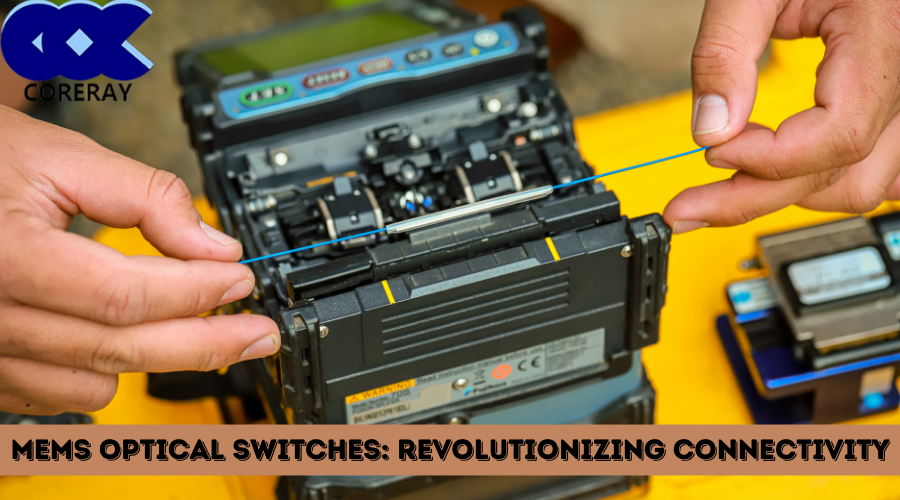
Nov 17,2023
In the dynamic and ever-evolving landscape of technology, micro-electrical mechanical systems (MEMS) have not just emerged but asserted themselves as pivotal players, reshaping and redefining connectivity in unprecedented and groundbreaking ways. This article aims to provide a thorough, insightful, and in-depth understanding of MEMS technology, shedding a brilliant light on the significance of MEMS optical switches in modern connectivity. These switches have transcended their status as mere technological components, evolving into architects of seamless connectivity that has become a convenience and necessity in our interconnected world.
MEMS Optical Switches, far from being relegated to the realm of the conventional, have elevated themselves beyond the mundane, becoming essential architects of seamless connectivity. Understanding their definition, significance, key characteristics, and benefits becomes not just a knowledge pursuit but a necessity in appreciating their transformative role in the technological landscape. These switches are not just devices but catalysts, ushering in a new era of technological interconnectivity.
The MEMS acronym might, at first encounter, present itself as a labyrinth of complexity, but its true power lies in its simplicity. Unveiling the complete form of MEMS and deciphering the capabilities tucked within MEMS switches is not just a mental exercise but a crucial step in comprehending their profound impact on modern technology. With their unassuming acronym, these switches carry the potential to revolutionize how we perceive and interact with connectivity.
Delving into the intricate workings of MEMS switches reveals a mesmerizing dance of light. This section doesn't merely glance at their working principles; instead, it takes the reader through the intricacies, exploring real-world applications and implications that showcase the switches' versatility, adaptability, and undeniable impact on the technological landscape. The dance of light becomes a scientific phenomenon and a poetic narrative of connectivity.
The optical switch, far from being a mere conduit for data, transcends its role as a connector. It assumes a pivotal and multifaceted role in diverse functions across industries. This section delves deep into exploring its processes and practical applications, providing insights and a valuable understanding of its adaptability and significance. The optical switch becomes more than a technological component; it becomes an enabler, a catalyst for innovation.
Understanding its key components becomes imperative to grasp the essence of MEMS technology. This section doesn't just identify and explain these components; it meticulously dissects them, highlighting their interplay in the intricate world of MEMS. Here, every detail isn't just a part; it's a contributor to the brilliance of the whole, showcasing the interconnected brilliance that defines MEMS technology.
MEMS technology doesn't confine itself to the sterile laboratory environment; instead, it emerges into the real world, making a tangible and transformative impact. This section doesn't just provide a superficial exploration of real-world scenarios of MEMS implementation; it dives deep, identifying the diverse industries that benefit and thrive on this revolutionary technology. MEMS, once confined to the lab, has now become an integral part of our daily lives.
In conclusion, MEMS optical switches stand not just as technological pillars but as stalwarts in the connectivity landscape, shaping and defining how we interact with technology. Recapping their significance becomes not just a summary but a celebration of their contribution, and contemplating prospects and advancements in MEMS technology leaves us intrigued and excited about the limitless possibilities they bring. The future becomes not just a prospect but a canvas awaiting the brushstrokes of innovation, ensuring a future where connectivity not only knows no bounds but continually redefines them.
What makes MEMS optical switches unique in the connectivity realm?
MEMS optical switches stand out not just due to their intricate working principles but because these principles allow for swift and efficient connectivity in various applications, setting them apart as beacons in the dynamic connectivity landscape.
How do MEMS switches contribute to real-world scenarios?
MEMS switches play a crucial role in real-world scenarios by facilitating not just connectivity but seamless connectivity in industries like telecommunications, healthcare, and more, making them indispensable not just as components but as integral parts of the fabric of modern society.
Can MEMS technology be applied beyond optical switches?
Indeed, MEMS technology extends beyond the confines of optical switches, influencing sensors, actuators, and many other electronic components, showcasing the versatility and potential for applications across various technological domains.
What are the prospects of MEMS technology?
MEMS technology's future appears promising and teeming with potential, with ongoing advancements likely leading to even more innovative applications in diverse industries. It becomes not just a field to watch but a realm of excitement for technological enthusiasts and industry professionals alike.
Where can I get more information about MEMS technology?
For in-depth insights into MEMS technology and its applications, you can access further resources at https://www.corerayoptical.com/blogs/exploring-mems-optical-switch-the-working-principle-and-application, ensuring not just a more profound understanding but a comprehensive exploration of this transformative technology.